We learn from a master popiah maker how to make the skins for this popular roll by hand, from scratch.
It all started on our friend Mike’s blog with his post about his cousin making popiah skin. I commented that we should have a popiah making party; a couple months later, his cousin was back in town and he invited us to come over to his house to watch and learn. According to him, his cousin put her three children through college by selling her popiahs at the night market. That makes her a master in my book!
For Starters
Popiah (also spelled “poh pia”) is a fresh spring roll. Think of it as an Asian burrito. Only instead of a thick, doughy flour wrapper, popiah are made with a very thin, crepe-like sheet or “skin”. This skin is made by smearing a ball of dough onto a hot griddle and letting it cook for a few seconds before removing it. The technique to get a uniformly thin skin is a skill that takes many months of practice.
The dough starts out as a thick batter. The ingredients for the batter are
1 kg flour
4-1/2 cups water
1 Tsp salt
2 Tbsp tapioca flour
You mix all the ingredients together until they make a lumpy batter:
But you don’t stop there. The next step in the process is to knead the batter by repeatedly lifting it up and slamming it back down into the bowl until it starts to hold together in ropes. Here’s a short video demo of how she did it, to show the result she was looking for:
After that, the dough is placed in the fridge overnight to rest and continue to develop. The next day, the dough is more solid and less tacky.
Are We Having Fun Yet?
Now comes the fun part: cooking the skins. First, you need a wide, seasoned griddle (preferably cast iron). Heat it on a medium flame. Dipping your hand into the container of dough, scoop out a generous lump and pinch it off, winding the dough and gathering it into the cup of your hand.
Now take that lump and smear it quickly and smoothly in a big circle on the griddle. Pull up quickly so that only the dough that makes contact with the griddle actually sticks. There may be some high spots of dough remaining on the crepe so flick the dough in your hand down onto the spot to pick them up (the motion is kind of like playing with a yo-yo). Wait a few seconds while the moisture cooks off. When you see the edge of the crepe start to curl up, carefully peel off the skin and place it on a plate.
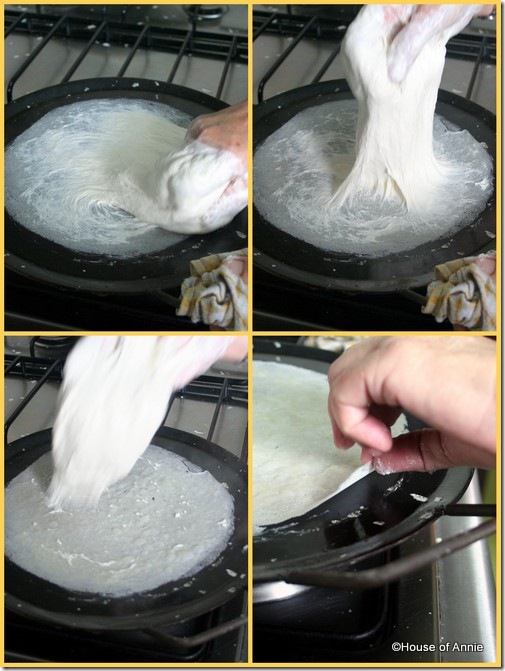
Watch how effortlessly she does it in this video! It’s like magic. (She’s speaking Hokkien, in case you’re wondering.)
Of course, we each had our turns at throwing the dough and smearing the skins. Believe me, it wasn’t pretty! I don’t know how much dough I wasted, but I know I made quite a mess. I think I managed to get one or two good skins out of my attempts.
So, why make your own popiah skins?
Most of the skins available nowadays in Singapore and Malaysia are machine-made. In America, you can’t even get fresh made ones – you have to rely on frozen spring roll wrappers. Machine-made ones are okay only, but they can’t match the thinness, springiness or durability of a freshly hand-made popiah skin. Only a fresh, hand-made popiah skin can hold together all the popiah fillings without bursting or leaking.
Mike’s cousin’s popiahs were very special, and not just because of the homemade skins. The filling for her popiahs consisted of items we’d never seen used before, like crushed, twice-fried you tiau, fried minced hae bee and fried and minced dried fish. They were really amazing.
BUT we’re not going to talk about that popiah. Annie’s Mum, in our opinion, makes the best popiah. So in our next post we will talk about her recipe.
Stay tuned!
Aloha, Nate
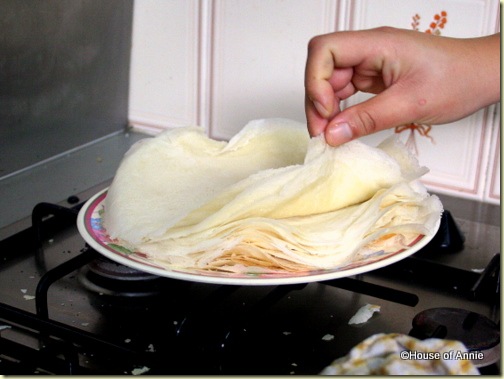
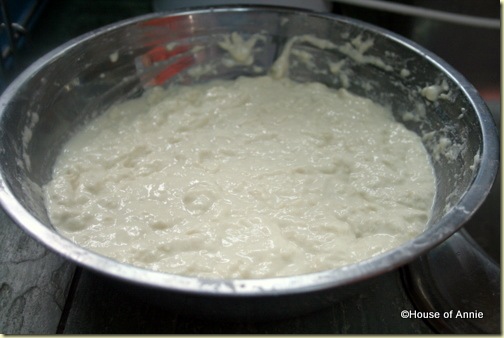
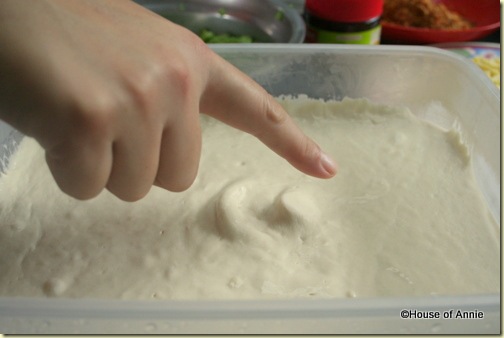
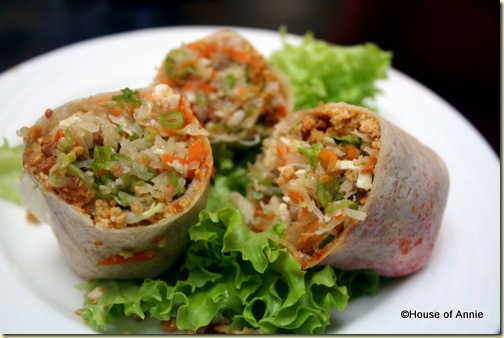
What about the filling recipe for the pic shown? Looks onolicious
Hi Mj,
Thanks for your question.
The recipe for Mum’s popiah filling is at https://www.houseofannie.com/mums-popiah-best-2/
Hi!
Thank you for the recipe, just one question, when you say flour what kind of flour did she use? 0,00??
Thanks
Roughly how many minutes we need to knead the batter by repeatedly lifting it up and slamming it back down into the bowl?
Can u store home made Poh piah skins in the fridge/freezer?